„Antiquities are rare treasures, he who despises them despises their fathers, their history and memoirs of their existence, and what will one day keep their memory?“
Michael Ungar (approx. 1794)
Thanks to the economic boom of the country the churches received a rich liturgical décor – including impressive triptychs in the choir area, illustrating the life of Jesus and the Saints. Part of the image program from the time before the Reformation also included artful murals in the sense of biblia pauperum (Pauper’s Bible) that illustrated the divine salvation in the choir and in the nave. Gothic sacrament houses or ornamented niches were created for the storage of the host and some prosperous villages even boast bronze baptismal fonts. After the Reformation, as seating for the priests, other clergy, and celebrants richly framed stone sedilia or carved and inlaid stalls served as a place where the pastor and other local dignitaries took place.
With the Reformation numerous triptychs and the murals painted before the Reformation initially remained in the churches. As additional décor the so-called glater emerged – wooden galleries in the nave, which offered seats for all worshipers. Not later than in the 18th century, most murals were plastered and painted over in order to revoke the churches from the Counter Reformation attempts under Habsburg reign. Now increasingly contemporary altars were created and in some places combined with the organs to form a unit.
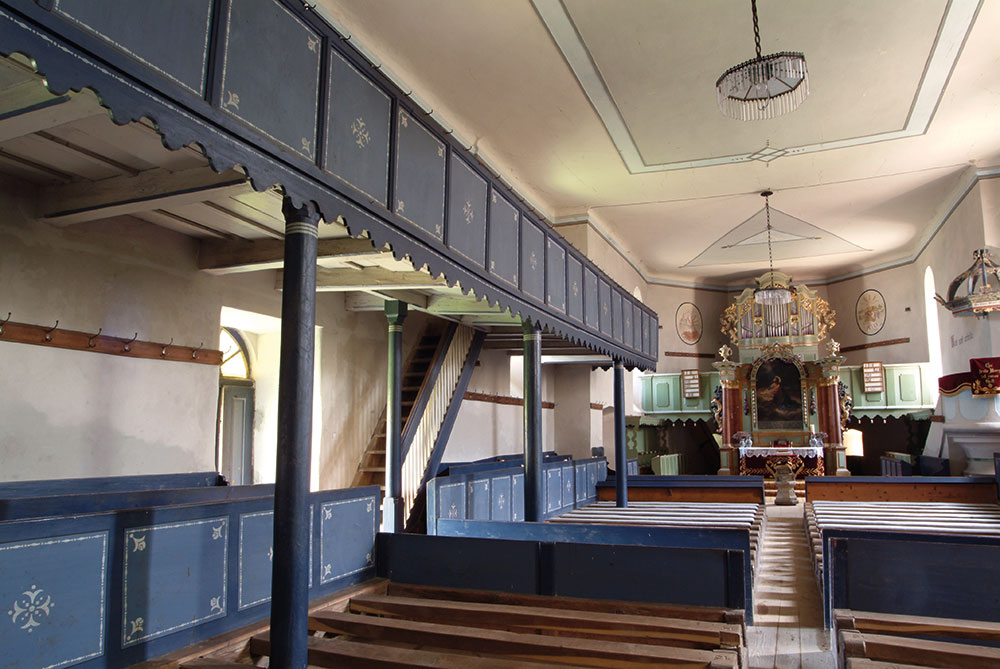
After the collapse of the choir area of the church of Velț in 2002, much of the historical furnishing was stolen or destroyed through vandalism. Only the framing of the Gothic sacrament niche could be secured in the year 2016. Photo: Arne Franke 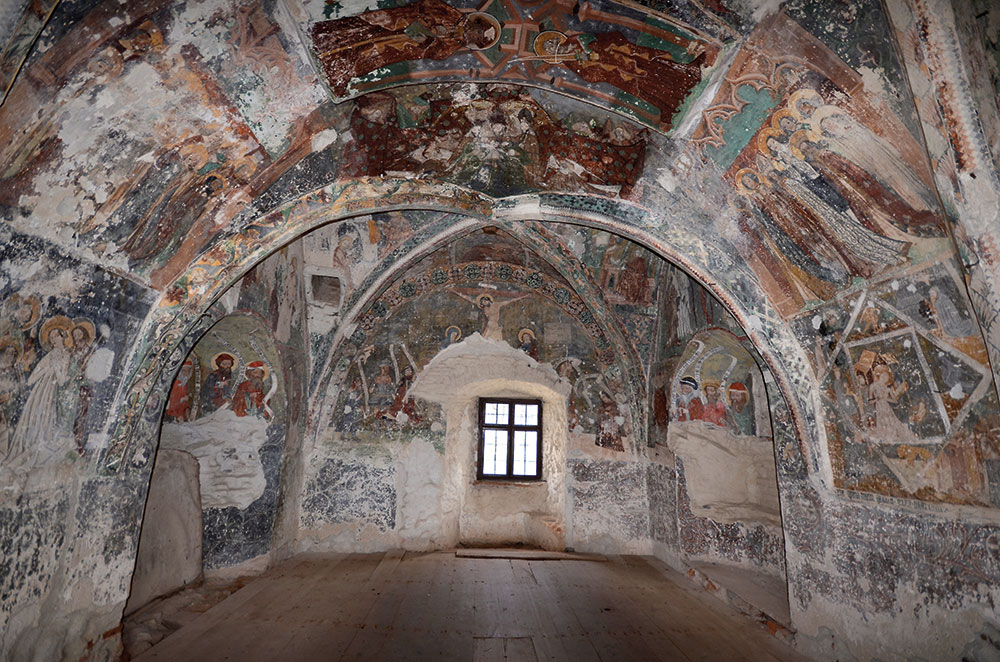
Among the more recent discoveries are the murals in the so-called Catholic Chapel of the forti ed church in Hârman, which date back to the late 15th century, and are now accessible to the public after years of restoration. Photo: Arne Franke 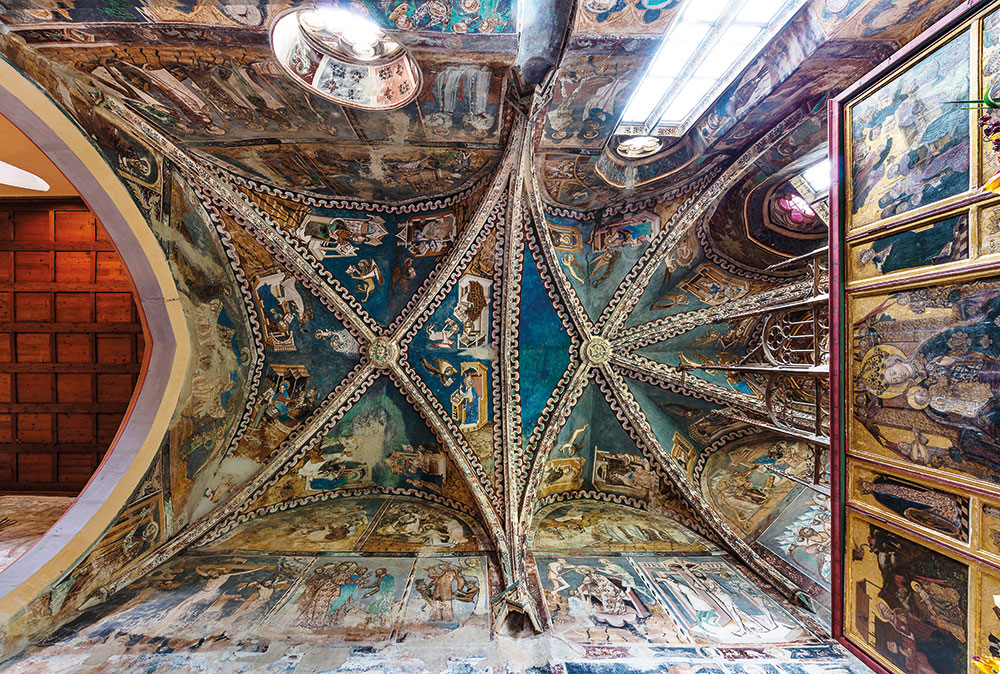
One of the most important Gothic mural cycles of Transylvania is located in the parish of Mălâncrav. Scenes from the Passion of Christ in the choir complete the picture program of the winged altar, one of the oldest in the country. Photo: Martin Eichler 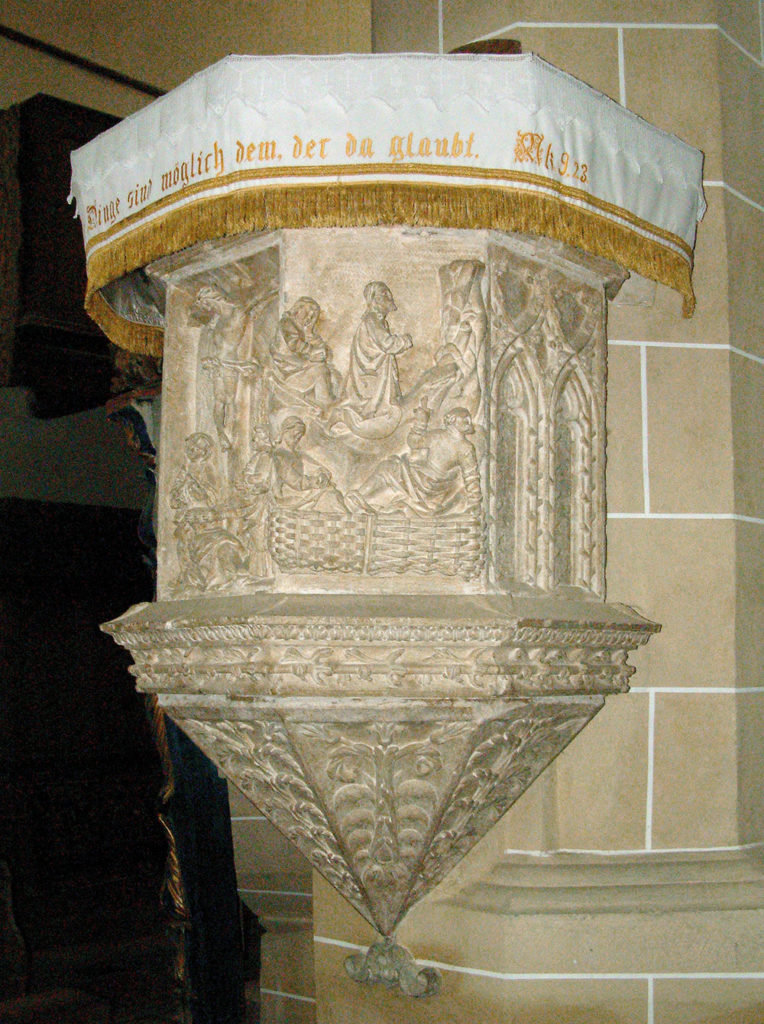
Among the oldest Transylvanian pulpits is the stone pulpit of Biertan created 1523 by Master Ulrich from Brașov. It was made shortly before the Reformation of the Transylvanian Saxons. Photo: Arne Franke 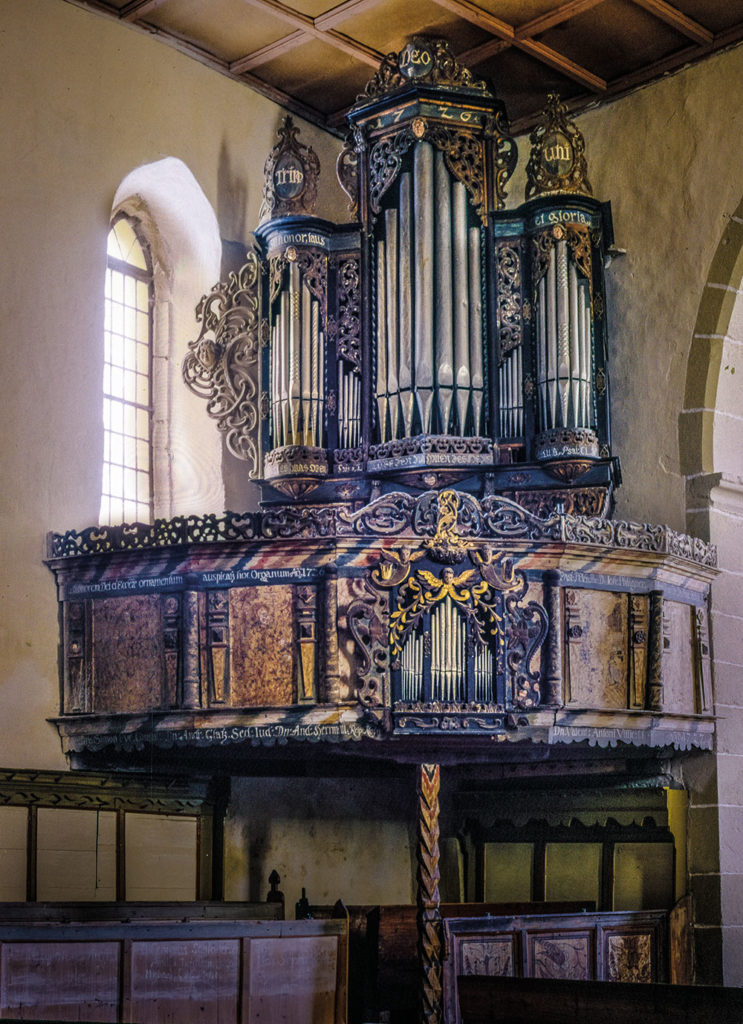
Among the oldest organs in the country is the swallownest-shaped organ of Rupea manufactured in 1699 by a German instrument manufacturer from Criț. Due to construction work in the nave it has been standing in the Black Church of Brașov since 2009. Photo: Martin Eichler 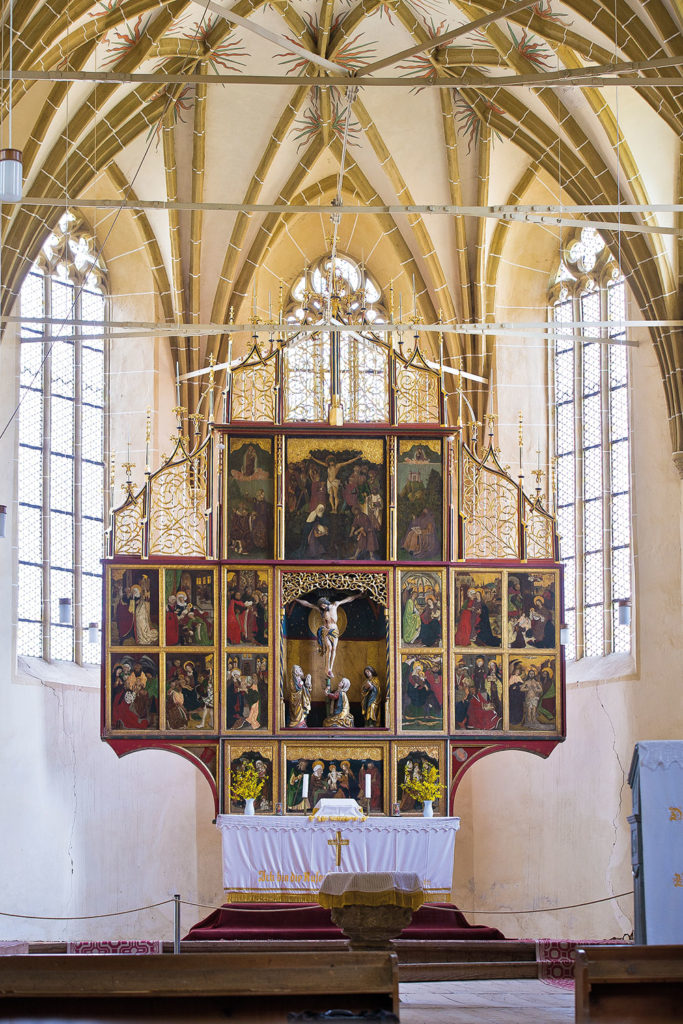
Before the Reformation the triptych stood in the center of richly decorated churches. Among the works with the highest quality is the altarpiece in Biertan, created between 1483 and 1515 illustrating the life of Jesus and Mary and other Saints in 28 panel paintings. Photo: Martin Eichler

